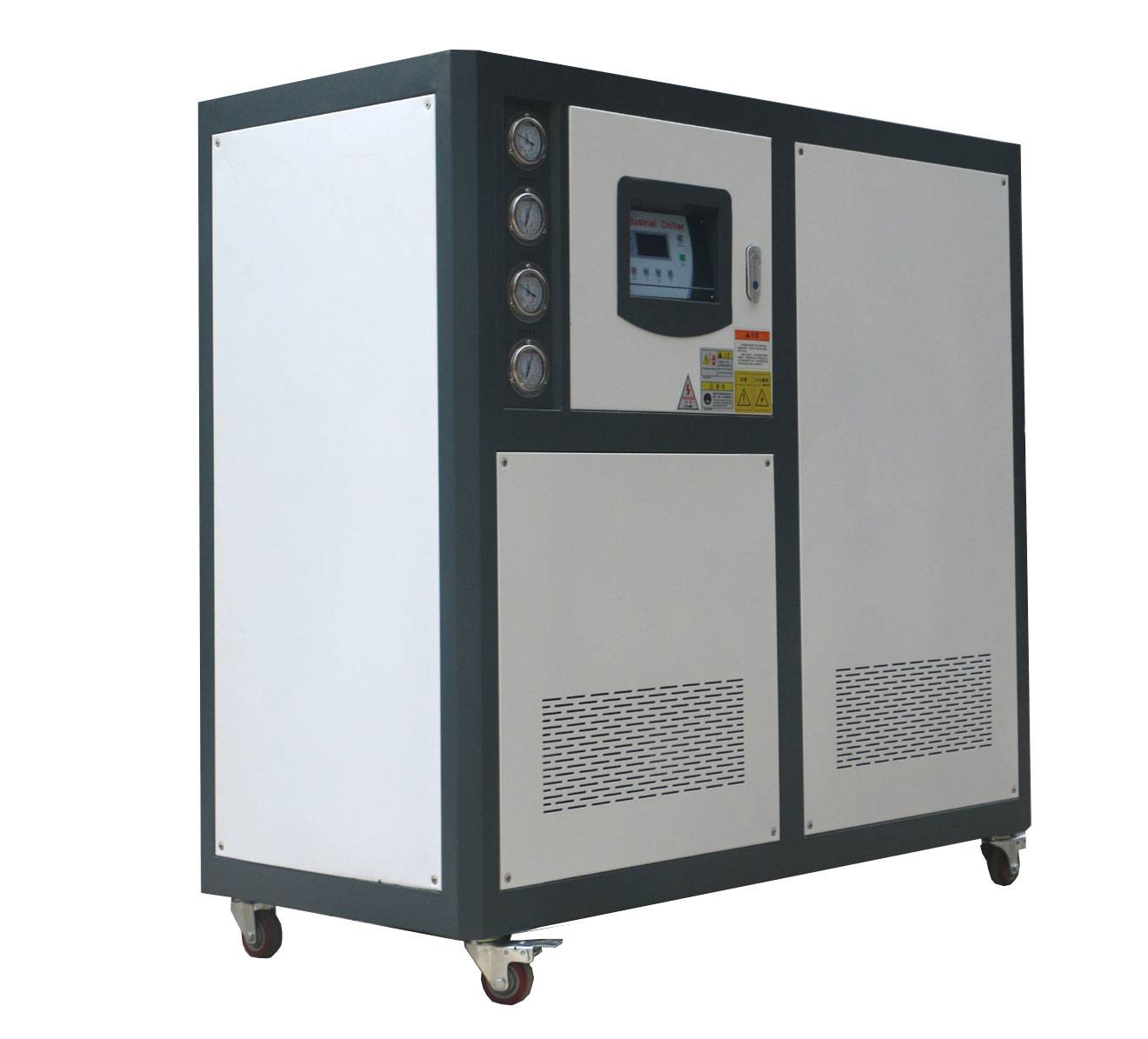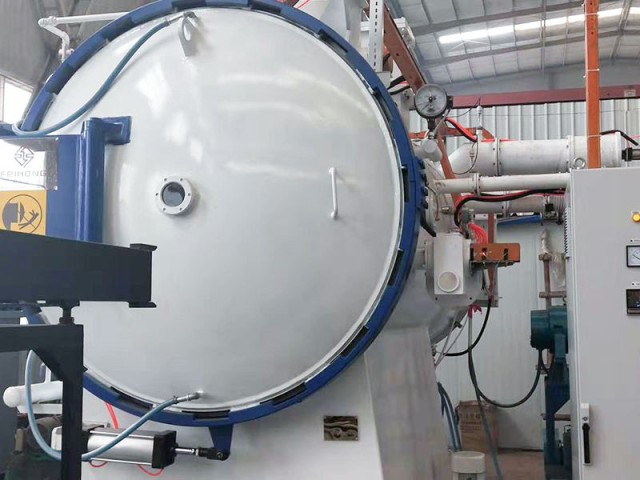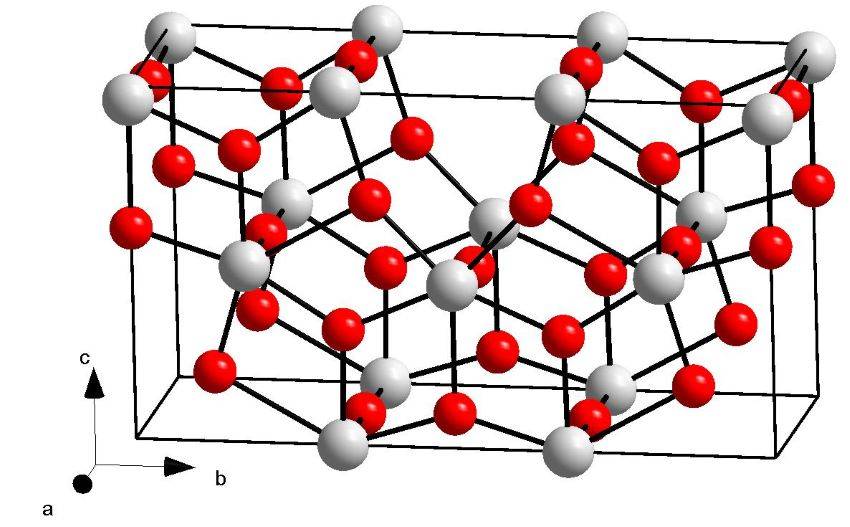Introduction to Vacuum Heat Treatment Furnaces
Definition and Application
Vacuum heat treatment is a sophisticated process that integrates vacuum technology with traditional heat treatment methods, all conducted within a vacuum environment. This advanced technique is employed to perform a variety of thermal processes, including quenching, annealing, tempering, and carburizing, among others.
In vacuum heat treatment, the absence of atmospheric oxygen prevents oxidation and decarburization, which are common issues in conventional heat treatment methods. This results in a cleaner surface finish and preserves the integrity of the material's properties. Additionally, the controlled environment allows for precise temperature management, reducing thermal stress and enhancing the overall mechanical properties and longevity of the treated components.
The application of vacuum heat treatment spans across numerous industries, from aerospace and automotive to electronics and medical devices, where maintaining the precise quality and performance of materials is paramount. By eliminating the risks associated with conventional methods, vacuum heat treatment offers a superior alternative that meets the stringent demands of modern manufacturing.

Benefits of Vacuum Heat Treatment
Vacuum heat treatment offers a myriad of advantages that make it a preferred choice in various industries. One of the most significant benefits is the elimination of oxidation, decarburization, and carburization, ensuring that the surface of the treated materials remains pristine. This surface purification not only enhances the aesthetic appeal of the workpieces but also reduces the need for additional cleaning processes, thereby saving manufacturers both time and money.
Moreover, vacuum heat treatment significantly reduces thermal stress, which is a common issue in traditional heat treatment methods. By minimizing thermal stress, the process helps in preserving the mechanical properties of the metal workpieces, such as ductility, fatigue resistance, and toughness. This preservation is crucial for extending the service life of the components, making them more durable and reliable in demanding applications.
Another notable advantage is the improved control over heat treatment parameters. In a vacuum environment, the absence of air prevents contamination, allowing for precise control over heating and cooling cycles. This meticulous control enables manufacturers to tailor the treatment process to specific materials, resulting in enhanced hardness, strength, and other desired characteristics. The uniformity in heating and cooling also minimizes distortions, particularly in components with complex geometries, ensuring dimensional stability and precision.
Furthermore, vacuum heat treatment enhances surface hardness and wear resistance. The controlled heating and cooling cycles optimize the crystalline structure of the materials, leading to a harder surface that can withstand wear and tear better. This increased hardness is particularly beneficial in applications where durability and longevity are critical, such as in aerospace and automotive industries.
In summary, vacuum heat treatment not only addresses the limitations of traditional methods but also introduces several enhancements that contribute to superior material performance. From surface purification and reduced thermal stress to improved mechanical properties and wear resistance, the benefits of vacuum heat treatment are manifold, making it an indispensable process in modern manufacturing.
Operational Details of Vacuum Heat Treatment Furnaces
Water-Cooled Devices
In vacuum heat treatment furnaces, several critical components necessitate the use of water-cooled devices to maintain operational integrity and safety. These components include the furnace shell, furnace cover, and electric heating elements. The primary function of these water-cooled devices is to dissipate heat efficiently, thereby preventing thermal deformation and ensuring the structural stability of the furnace.
Water-cooled systems are integral to the longevity and reliability of vacuum heat treatment furnaces. By continuously circulating water around these critical components, the devices effectively manage the temperature gradients that could otherwise lead to material degradation. This cooling mechanism not only safeguards the components from overheating but also ensures that the furnace operates within safe temperature limits, thereby enhancing overall operational safety.

Moreover, the use of water-cooled devices in vacuum heat treatment furnaces is particularly beneficial in maintaining the precise temperature control required for processes such as quenching, annealing, and tempering. The consistent cooling provided by these systems helps in achieving uniform heat distribution, which is crucial for the quality and consistency of the heat treatment process.
In summary, water-cooled devices play a vital role in the vacuum heat treatment furnace setup, ensuring that key components remain intact and operational safety is maintained. Their efficient heat dissipation capabilities contribute significantly to the overall performance and durability of the furnace.
Low Voltage and High Current
To prevent the occurrence of glow discharge and arc discharge, electric heating elements in vacuum heat treatment furnaces operate under conditions of low voltage and high current. This operational mode is essential for maintaining the integrity and efficiency of the heating process within the vacuum environment.
| Discharge Type | Description | Prevention Method |
|---|---|---|
| Glow Discharge | A low-pressure discharge characterized by a faint, glowing light. | Operate under low voltage and high current. |
| Arc Discharge | A high-intensity discharge that can cause severe damage to equipment. | Maintain low voltage and high current conditions. |
By operating under these specific electrical conditions, the risk of harmful discharges is significantly reduced, ensuring the safety and longevity of the heating elements. This approach not only protects the equipment but also enhances the overall reliability and performance of the vacuum heat treatment process.
Heating and Insulation Materials
In the construction of vacuum heat treatment furnaces, the selection of heating and insulation materials is critical to ensuring the furnace's ability to withstand extreme temperatures and maintain operational integrity. Materials such as tantalum, tungsten, molybdenum, and graphite are specifically chosen for their exceptional high-temperature resistance and low vapor pressure. These properties enable these materials to function effectively in the vacuum environment where conventional materials would fail.

However, these materials are not without their challenges. One significant drawback is their susceptibility to oxidation when exposed to atmospheric conditions. This oxidation can lead to degradation of the material's structural integrity and operational efficiency. To mitigate this issue, these materials are often used in conjunction with protective coatings or are employed in parts of the furnace that are isolated from atmospheric exposure during operation.
| Material | High-Temperature Resistance | Low Vapor Pressure | Oxidation Susceptibility |
|---|---|---|---|
| Tantalum | High | Low | Moderate |
| Tungsten | Very High | Very Low | High |
| Molybdenum | High | Low | High |
| Graphite | High | Very Low | High |
The table above highlights the key characteristics of the primary materials used in vacuum heat treatment furnaces. While each material offers unique advantages, their shared susceptibility to oxidation underscores the importance of maintaining a vacuum environment during heat treatment processes. This ensures not only the longevity of the furnace components but also the quality and consistency of the heat treatment outcomes.
Vacuum Sealing
Strict vacuum sealing is not just a technical requirement but a critical operational necessity for maintaining the furnace's working vacuum. This ensures the quality and consistency of the heat treatment process. The vacuum environment within the furnace prevents oxidation, decarburization, and other surface defects that are common in traditional air furnace heating methods.
To achieve this, specialized sealing materials and techniques are employed. These include high-performance elastomeric seals and metal gaskets, which can withstand the high temperatures and pressures involved in vacuum operations. Additionally, regular maintenance and inspection of the sealing components are essential to prevent leaks and maintain the integrity of the vacuum.
Moreover, the vacuum sealing system must be integrated with advanced vacuum pumps and monitoring devices. These tools help in maintaining the desired vacuum level, ensuring that the furnace operates within the optimal pressure range for various heat treatment processes. This integration not only enhances the efficiency of the furnace but also extends the service life of the sealing components, reducing operational costs in the long run.
Automation
High automation in vacuum heat treatment furnaces is pivotal in ensuring the precise and timely execution of critical processes such as heating, cooling, and quenching. This level of automation not only minimizes human error but also optimizes the efficiency and consistency of these processes.
Key Benefits of Automation in Vacuum Heat Treatment
- Precision Control: Automated systems provide exact control over temperature, pressure, and processing times, ensuring that each heat treatment cycle meets stringent quality standards.
- Timely Execution: Automation ensures that each phase of the heat treatment process is executed within the optimal timeframe, preventing delays and ensuring the timely completion of each cycle.
- Minimized Operator Errors: By reducing the need for manual intervention, automation significantly lowers the risk of human error, which can be particularly detrimental in high-stakes processes like quenching and annealing.
Automation Features and Their Impact
| Feature | Impact |
|---|---|
| Programmable Logic Controllers (PLCs) | Enables the precise control of heating and cooling cycles. |
| Real-Time Monitoring | Provides continuous oversight, allowing for immediate adjustments. |
| Data Logging | Records process parameters, facilitating quality control and analysis. |
Automation in vacuum heat treatment furnaces is a cornerstone of modern manufacturing, offering a blend of reliability, efficiency, and precision that is essential for producing high-quality components.
Comparison with Traditional Heat Treatment Methods
Oxidation and Decarburization in Air Furnaces
Traditional air furnace heating processes are fraught with issues such as oxidation and decarburization, which significantly impact the quality of the treated materials. Oxidation occurs when the surface of the metal reacts with oxygen in the air, forming a layer of oxide. This not only degrades the surface finish but also reduces the material's thickness, leading to dimensional inaccuracies. Decarburization, on the other hand, involves the loss of carbon from the surface layers of steel, which weakens the material and alters its mechanical properties.
These surface defects necessitate additional processing steps, such as grinding or re-carburizing, to restore the material's integrity. This not only increases the production time but also adds to the overall cost. Furthermore, the repeated heating and cooling cycles can introduce thermal stress, potentially leading to cracks and other structural weaknesses.
In contrast, vacuum heat treatment furnaces mitigate these issues by operating in a controlled, oxygen-free environment. This results in no oxidation, decarburization, or carburization, ensuring that the treated materials maintain their original properties and dimensions. The benefits of vacuum heat treatment extend beyond just surface quality; they also include improved mechanical properties and extended service life, making it a superior alternative to traditional air furnace methods.
Related Products
- Vacuum Hot Press Furnace Machine Heated Vacuum Press
- Vacuum Heat Treat and Pressure Sintering Furnace for High Temperature Applications
- Vacuum Heat Treat Sintering Brazing Furnace
- Vacuum Hot Press Furnace Heated Vacuum Press Machine Tube Furnace
- 2200 ℃ Graphite Vacuum Heat Treat Furnace
Related Articles
- Exploring Tungsten Vacuum Furnaces: Operation, Applications, and Advantages
- Vacuum Induction Melting Furnace: Principle, Advantages, and Applications
- Comprehensive Guide to Vacuum Hot Press Furnace Application
- Maximizing Efficiency and Precision with Vacuum Graphite Furnaces
- Vacuum Laboratory Furnaces in Advanced Materials Research





















